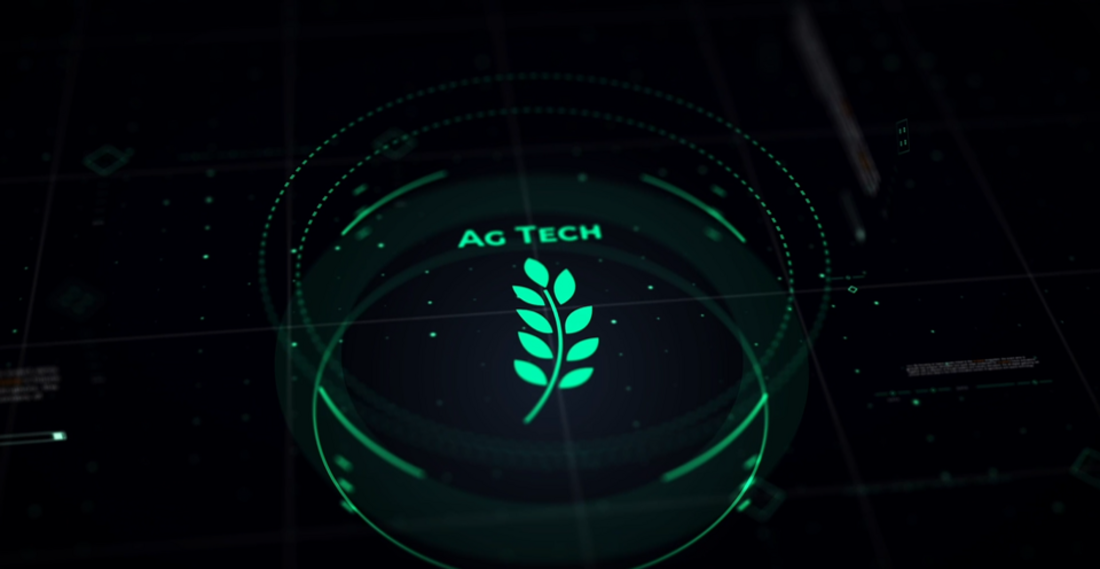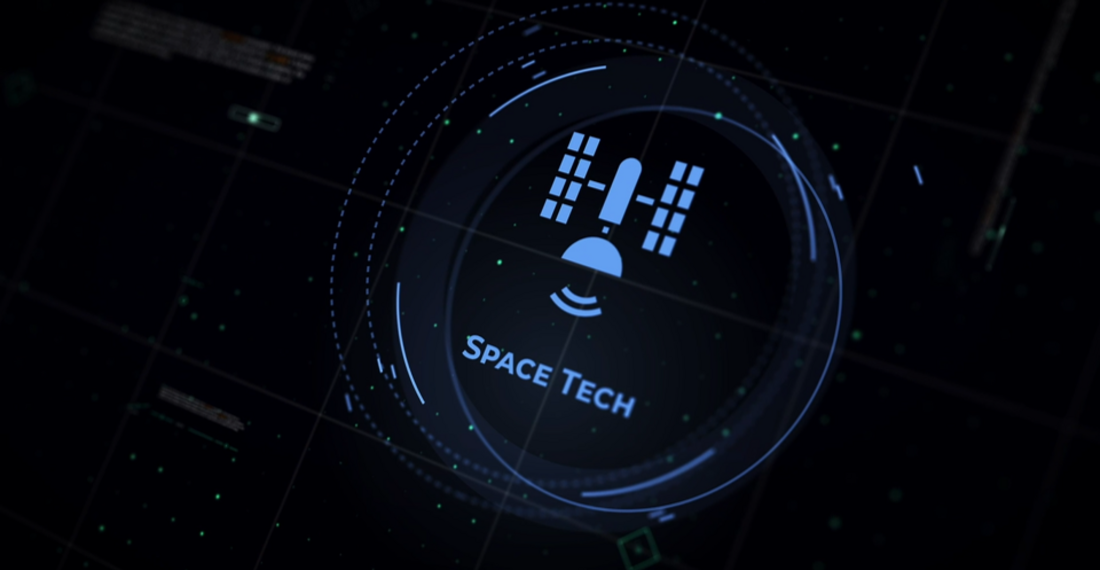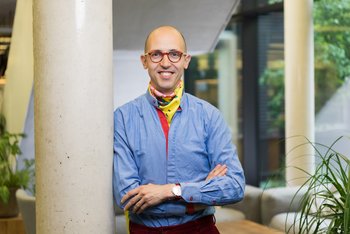co-pace Thought Leader Dialogues: AgTech and SpaceTech
It is at events and conferences that we at co-pace, Continental’s dedicated startup organization, bear witness to the birth of a great many tech trends, establish new connections, and build trust with a variety of industry professionals. And typically, we do all of this in person!
But, if 2020 has taught us anything, it is that our new virtual world — while not replacing interpersonal interaction — is a helpful medium for seeing such necessary meetings continue and thrive. And while the day when we get to shake each others’ hands again can’t come soon enough, we made the most out of the situation, and welcomed 58 thought leaders from around the planet to attend our third #ThoughtLeaderDialogues event.

Hosted live from my home in the heart of Berlin last week Thursday, we crossed the digital divide, and connected with many of the world’s most inspiring minds, from the American West Coast and Israel, all the way to a constellation of European countries. Conceived with the intention of sparking conversations around groundbreaking ideas, and watching these sparks evolve into new business engagements for all of us, this year’s Thought Leader Dialogues did all of that, and much more.
And even though our virtual gathering was small, the event’s design was orchestrated to encourage intimate group discussions, with maximum engagement around topics related to the latest agricultural and space technology. Purpose-built to widen our perspective on both topics — now key to contemporary discourse — we dissected them with a selection of four questions each.
In the words of Dr. David Barnhart: “Cross-disciplinary discussions generate far more innovative thoughts in the end...asking ‘why not’ is usually more entertaining than just ‘why’!”
Why AgTech and SpaceTech?
The inspiration for these two topics came from two of the thought leaders at co-pace: Anil Rachakonda and Yaron Flint, both of whom take care of the relationships built with the different global startup ecosystems and who execute the analyses and strategy topics.
AgTech represents a massive market primed for automation, AI applications, and supply chain optimization. With food waste becoming a growing concern around the world, its implications on sustainability make it as much a field in desperate need of innovation, as a social responsibility for us all.
SpaceTech on the other hand represents the next frontier. Not only because it triggers the imagination about new worlds, but because it enables technical implementations and solutions down here on earth. From connectivity improvements and data management, to earth observations and data collection, the “race to space” has never been more thrilling.
And why these two topics together?
This question was answered by Daniel Metzler, CEO of Isar Aerospace, when he said,
“Imagine a piece of bread…”
Not one that was made out of wheat grown on Mars by Mark Watney, but wheat grown here on earth. The wheat’s value chain spans from crop fields, to the logistical work of space infrastructure. Through multi-spectral imaging data, the wheat’s health was observed, water supplies were modified to suit its exact needs, fertilizers were adapted to suit the environmental conditions, and the time-to-market was predicted way in advance. The satellite constellations that observed this journey are not only collecting observational data, but are directly connected to IoT sensors on the field, enabling even more precise, even smaller scale adjustments in the data models. Combining the observation data with various sensor data (sky and ground observations) makes it possible to know which part of the field is ready to be harvested by the ground robot, and to predict which part should be harvested next. And in the worst case, when a disaster happens (floods, wildfires, oil spillages, etc.), we can use this data to make predictions to minimize impact and rebuild accordingly. Who would have imagined so much technology to be packed in our humble slice of bread?!
It is the same changing (and challenging) world that we explored in our event’s breakout sessions, with each educated group made up of the diverse perspectives of startup entrepreneurs, Continental experts, venture capitalists, and industry disruptors.
The following paragraphs are both a summary of our discussions, and the beginnings of many more.

Ag 1. “A world without farmers?”
(Vitaliano Fiorillo, Thiemo Buchner, Iddo Geltner, Jeff Peters, Peter Pickel, Matija Zulj)
The story of the bread did not mention the farmer (other than Mark) — Will there be farmers in the future? Yes, there will be, but their life will be different. Technology is already there and ready for scale — farmers need still to accept and trust. They will see gains in efficiency, insights into customer needs, and knowledge transfer across borders and time periods. They will benefit from the elimination of time consuming, low-value tasks, ultimately freeing up their time to take on more entrepreneurial tasks. Technology partnerships with farmers will decrease dependence on chemical inputs (e.g. pesticides), which will make farming at scale much more environmentally friendly and sustainable. The key enablers are robotics and AI technologies — and companies in this domain will be successful when they have gained understanding of farm processes, and are able to partner with farmers. In conclusion, the key value of the farming and the tech world partnering is the move from yield-driven, to nutrient-driven motivation.
Ag 2. “AI to farmers: ‘What do you want to know?’”
(Christa Hoffmann, Ofir Ardon, Nessi Benishti, Simcha Shore, Mario Branco, Dirk Remde, Yaron Flint)
It is not easy to jump into the shoes of the farmers. You can ask AI experts what they think farmers should know, or ask farmers what they think artificial intelligence could give them, but it is challenging putting the two in direct conversation to get to the bottom of it. Farmers need trustworthy experts to tell them what tools are good so that farmers can focus on their day-to-day operations. They need a direct, easy, interoperable solution that requires minimal maintenance and support. This is not typically how the tech world works where technology stands in the center of the relationship and demands maintenance, development, and constant enrichment. How can we reconcile this? It is up to the ecosystem to bridge both parties, and to create actionable insights for farmers and their operations, first. And technology companies should not expect to run PoCs in the fields because of the high risk of impacting the yield and livelihood — in other words, farming solutions need to have their own “laboratories” for validating future solutions (just what one of our participants had done after his retirement from the world of investment banking).
Ag 3. “IOT - Connect the Disconnected”
(Patrick May, Larry Jordan, Axel Tuschik, Sharon Devir, Andrea Sozzi Sabatini, Ilay Englard, Israel Talpaz)
From the perspective of the farmer, to the perspective of the technology company: What do the techies need to do to add value? The value chain is segmented, the stack is incomplete, and the data is disconnected. Creating technological solutions for these is a resounding opportunity for the AgTech industry. For example, insects are becoming a larger and larger risk to our food supply. Protecting food supply chains is a necessity, and information lies at the heart of that. Sensors are easy to install, but collecting the data and processing it comes with its own set of unique problems — infrastructure does not exist, or requires large bandwidth (e.g. pictures and video data). That’s why there is such a sizable, untapped opportunity in this domain; to make farms connected, to build the infrastructure, and to push partnerships between startups and big institutions.
Ag 4. “Robots vs. heavy traditional machinery”
(Andreas Mandl, Dror Erez, Pavel Hilman, Michael Hofmann, Ittai Marom, Luca Morandi, Mark N. Zeytoonjian)
From a different spectrum of the technology field comes another provocative question: Will automated heavy traditional machinery dominate, or will small modular robots provide the necessary tech? The introduction of robots in the field has already started, fueled by pressure to reduce the traditional use of chemicals, pesticides, and fertilizers. These consumer and regulatory requirements have opened a door, but why haven’t robots taken over yet? A similar conclusion to the others, the funding isn't there - the agtech field is deprived of corporate investments (since corporations rarely invest in technology that might disrupt their own business) and VC investments (where the horizon and expectations operate on shorter timeframes). The team concluded that the business case still needs to be articulated, and that due to the nascent state of the robotics market, it does represent market opportunity.
Overall, our agritech participants illustrated just how far we have to go before we can bring the “users” (i.e. farmers) and technology together: tech companies (startups, as well as tech corporates), need to understand the diverse problems that farmers encounter in their operations, and provide the necessary infrastructure to empower the technological solutions.
While we already know that spacetech solves some of the aforementioned infrastructural needs — remember the story about bread? — there are still many other opportunities to consider, and that’s what the other 4 groups discussed.

Space 1. “Does Space Date Live on The EDGE?”
(David A. Barnhart, Laura Edwards, Robert Gee, Thomas Andrae, Michael Huelsewies, Amir Iljazovic, and Stefan Liske)
When looking into the ecosystems of autonomous vehicles in space, connectivity becomes a key focus area, and more specifically, the translation between different vehicles using different systems. This of course raises the issue of standards, but in particular, real time advances. How do we make such multi-dimensional data intelligible and actionable on a human level? We don’t want it to seem like we are taking a 747 to space, but such advances have implications for data flows between spaces and Earth, giving rise to the question of resilience. That is to say, the data backbones in space do not only need to be strong, but complimentary of all space- and earth-bound infrastructure. The overarching theme of cooperation is key when looking to avoid the monopolies often brought about by such notable infrastructural investments. An additional challenge is ensuring there is a failsafe — a docking system of sorts — for systems and devices that are lagging behind. As the use of space data gains prevalence, it must be prepared to onboard the late-comers, and keep the early-adopters constantly updated. Nobody ever thought the ISS would last as long as it did, and now its legacy systems are struggling to keep up. This all poses the same, important question: “How can we extend the life of such things in space?”
Space 2. “Hot chillies? How Does Research in Space Work?”
(Cindy Chin, Benjamin Erhart, Andrew Krehmeyer, Laurent Letourneaux, Mike Lewis, Red Boumghar, and Niki Padgett)
To better understand the connection between research, space and the flying goat, the question must address the status of experimental space products, relevant legal parameters, and what this means for innovation here on earth. It becomes apparent that a very limiting factor for space exploration is its food supplies, but extending such supplies in space can be challenging for a number of reasons: 1. You can’t build a farm in space, so your equipment needs to be compact, and the supply chain needs to be different. 2. You have to learn the basic science of this new terrain from scratch, which is both costly and time intensive. 3. You need a lot of patience to conduct effective space research. As a result, when research leads to results, supplies in space increase. And this increase needs to be cared for: “What do we do with such supplies?” One possible answer is the introduction of closed-loop systems, and making full use of “The Flying Goat.” As a highly efficient roundtrip supply and demand machine, “The Flying Goat” reminds us that we need things in space as much as we need them on the ground. There is a skill to pulling people together to gather results, so that incremental, corporate-level research remains open and unites varying expertise sets. The chillies are only as hot as the interplanetary collaboration is good.
Space 3. “The BIG 5 Trends in SpaceTech”
(Sean Casey, Corina Apachite, Volker Hirsch, Ivan Kosenkov, Anil Rachakonda, and Burak Uezel)
Sean has already published a separate article from the discussion in his group.
From space in the future and innovative technologies, to the application of sustainability regulations and business opportunities, many are left wondering how everything will come together in the next space station. One of the first big topics is that of “New Entrance” and how people (particularly entrepreneurs), companies, and all non-space faring countries weigh in on this new sector and identify its relevant, 21st-century opportunities. As situational awareness of what's happening in low-Earth orbit grows, “New Applications” will become more prevalent. Whether it’s bio printers working in microgravity environments, or orbit manufacturing, there is a need to align output with public awareness. And as awareness around sustainability continues to grow here on earth, the idea of “New Sustainability” becomes increasingly important: “How can we use our resources more efficiently, or clean up the debris found in low-Earth orbit?” This gives rise to the trend of “New Regulation,” and how we manage commodification, ownership, and the eventual regulation of standards. The fifth trend is “New Technologies:” the manufacturing of biomaterials in space, the impact of a robot economy on space, and of course, the innovative (and economic) opportunity of nuclear power. In conclusion, the entrepreneurs of tomorrow need to make the space market more accessible, fill it with new, sustainable applications that are adequately regulated, before leveraging new technologies to realize life outside of Earth.
Space 4. “What Is the Future of the Next Space Station?”
(Daniel Metzler, David Atkinson, Juergen Bilo, Frank Koch, Siyue Li, and Thomas Sinn)
As a combination of all aforementioned topics, the “Future of the Next Space Station” can be interpreted in any number of ways. Despite this, the first, perhaps most logical question is, “Where would we place such a space station?” Would it orbit the Earth, the moon, or be fixed to a single planet? When you think about it, it could even be stationed right here on Earth. Such thinking raises the point of resource utilization (and allocation), more specifically, radiation shielding, which is set to become one of the biggest challenges as we move closer to realizing the future space station. There is also the long-standing topic of space debris and the resources that already exist in orbit. As space debris is oftentimes a mix of materials, some valuable, others less so, it is important to consider whether any of it could be collected en route and (re)used upon arrival at the next space station. The incredibly complex task of debris collection also gave rise to the topic of “man vs. robot.” Upon further discussion, it became evident that in order to remain agile in the future, effective “man and robot,” as well as “robot and robot” interfaces would need to be established to ensure improved utilization of resources and that a public-private partnership could thrive on such space stations. Ultimately, the biggest goal of any space technology — apart from growing the perfect microgravity super plant — should be creating something that can be used to improve life here on earth, and effectively “close the loop.”

Conclusion
For our team here at co-pace, impact through partnering is everything. We build relationships with key influencers and thought leaders, we analyze insights to strengthen product proposals, and together with the wider Continental team and its roster of startups, we bring such solutions to scale. With this, we do not only aim to bring value to the startups and their respective investors, but to Continental and its customers, too. Over the past three years, co-pace has worked with more than 80 global startups, with a quarter of them now spread across various stages of business engagement.
As we move towards the future, be it by way of land or space, fortifying our practice in constant (interplanetary) collaboration will not only help us improve life on earth for many years to come, but bring the leading technologies back to the place we all call home for now. And as we close the all-important loop, validate our learnings, tirelessly innovate, and do our utmost to onboard those caught behind, the discussions shaping a better tomorrow promise to be inclusive for the entire human race.
Thanks to the team that co-authored this article: Lynn Regenberg, Adam Barnard, and Stefanie Palomino.